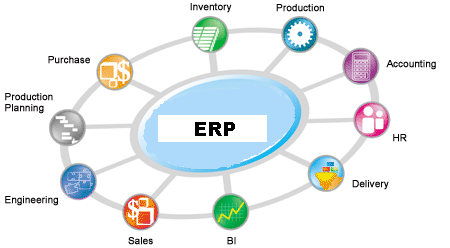A truly “Paperless” office is driven by ERP
Yes International Corporation has the easy-to-use paperless solution for the problems that enterprises and supply chains face every day. Read More
It is designed with built-in workflow processes enabling make-to-order and mixed-mode manufacturing companies to manage their entire order cycle, from Marketing and Sales through Production and Planning, Sourcing and Procurement, Installation and Service, Customer relationship and finally Financial recognition.
“A series of market trends are reshaping the financial management needs of companies of all sizes, especially small and mid-size businesses (SMBs). Globalization is forcing these companies to contend with the challenges of properly tracking multiple currencies. At the same time, advancements in mobile technologies have created an increasingly dispersed workforce that must submit key data to a company’s financial system and be able to access this corporate information from anywhere, at anytime to do their jobs. In the past, moving from QuickBooks to a more sophisticated financial system meant acquiring a costly and complex on-premise software application. These applications entailed a significant upfront investment, long deployment cycles, and cumbersome business processes. Today, a new breed of Software-as-a-Service (SaaS) solutions has emerged to address businesses’ real-time financial management needs. The ERP technology boom in the 1990’s gave organizations a means to start obtaining much needed operational visibility but was limited to product and order processing with other related functions and thus did not provide a complete, consolidated view of their entire business.
Successful implementation of an extended ERP system is the result of knowledgeable and dedicated people working together. It entails company-wide commitment, openness to change, good planning and experienced guidance. Offering regional and national programs, CIO (and CSO) events bring together some of the most respected names and thought leaders in information technology and security. Presented by CIOs and other senior level executives, these invitation-only programs offer timely topics and strong networking.
Enterprise resource planning software, or ERP does live up to its acronym. Forget about planning;it doesnt do much of that; and forget about resource, a throwaway term. But remember the enterprise part. This is ERP’s true ambition. It attempts to integrate all departments and functions across a company onto a single computer system that can serve all those different departments. That is a tall order, building a single software program that serves the needs of people in finance as well as it does the people in human resources and in the warehouse. Each of those departments typically has its own computer system optimized for the particular ways that the department does its work. But ERP combines them all together into a single, integrated software program that runs off a single database so that the various departments can more easily share information and communicate with each other. That integrated approach can have a tremendous payback if companies install the software correctly.
Take a customer order, for example. Typically, when a customer places an order, that order begins a mostly paper-based journey from in-basket to in-basket around the company, often being keyed and rekeyed into different departments; computer systems along the way. All that lounging around in in-baskets causes delays and lost orders, and all the keying into different computer systems invites errors. Meanwhile, no one in the company truly knows what the status of the order is at any given point because there is no way for the finance department, for example, to get into the warehouse’s computer system to see whether the item has been shipped. “You’ll have to call the warehouse” is the familiar refrain heard by frustrated customers.
ERP vanquishes the old standalone computer systems in finance, HR, manufacturing and the warehouse, and replaces them with a single unified software program divided into software modules that roughly approximate the old standalone systems. Finance, manufacturing and the warehouse all still get their own software, except now the software is linked together so that someone in finance can look into the warehouse software to see if an order has been shipped.


